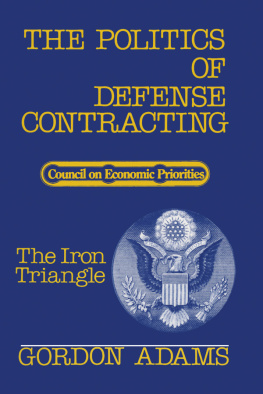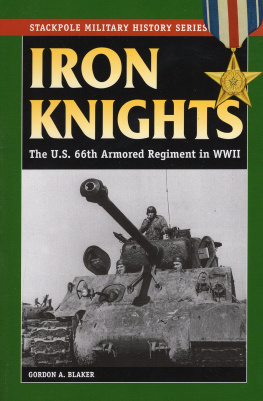Charts: Lillian Bogeinsky
First published 1981 by Transaction Publishers
Edition 1982
Published 2019 by Routledge
2 Park Square, Milton Park, Abingdon, Oxon OX14 4RN
52 Vanderbilt Avenue, New York, NY 10017
Routledge is an imprint of the Taylor & Francis Group, an informa business
Copyright 1981 by the Council on Economic Priorities
All rights reserved. No part of this book may be reprinted or reproduced or utilised in any form or by any electronic, mechanical, or other means, now known or hereafter invented, including photocopying and recording, or in any information storage or retrieval system, without permission in writing from the publishers.
Notice:
Product or corporate names may be trademarks or registered trademarks, and are used only for identification and explanation without intent to infringe.
ISBN 13: 978-0-87871-012-6 (pbk)
ISBN 13: 978-1-138-53752-1 (hbk)
The past decade has seen a significant change in the ability of business to obtain information on Federal policy-making, penetrate the councils of Government and move Congress and the public to support its political agenda. In the past decade, most of the Fortune 500 companies have established corporate offices in Washington to gather information, participate in public policy-making, and coordinate the firms overall Government relations effort. At a stunningly rapid pace, corporations have taken advantage of recent legislation to create Political Action Committees, channelling millions of dollars into campaign contributions to Federal candidates.
The Councils interest in corporate political activity combines a tradition of a decade of research on defense contracting with a realization of the widespread and growing political influence of corporations. For decades contractors have had a special stake in public policyfor some, contract dollars provide the bulk of their total business. Not surprisingly, then, defense contractors have pioneered in the development of Government relations tools and policies. Consequently, this study focuses on the political power of the defense industry. We analyzed in detail individual companies choosing eight that are major defense contractors and significant part of whose sales are with the Department of Defense: Boeing, General Dynamics, Grumman, McDonnell Douglas, Northrop, Rockwell International and United Technologies. These eight companies dominated the top 10 contractor list two-thirds of the time between 1970 and 1979, receiving over $100 billion in DoD contracts, 25 percent of all DoD awards. Nearly $25 billion of this was for research and development37 percent of the DoD total for R & D. They also received over $11.4 billion in NASA contracts, 36 percent of the NASA total. Fifty percent of the sales of these companies in the past decade have been principally with these two Federal agencies. Grumman was high, with 82 percent, and Boeing low with 30.8 percent.
We have pulled together information from many areas: board/financial networks, political action committees, personnel transfers, grass-roots activities, lobbying, the Washington office, in order to understand the nature and scope of corporate Government relations practices. The resulting study has led to the following findings:
1. Newly released data shows that five companies in our study (Boeing, General Dynamics, Grumman, Lockheed, Rockwell International) spent a total of $16.8 million during a two-year period in the 1970s to operate their offices in Washington. Rockwell Internationals Washington office, alone, spent $7 million. This amount includes substantial spending on lobbying and Government relations, much of which is subsidized by the taxpayer. These five contractors charged $15.8 million of this amount to the Department of Defense as part of general and administrative expenses, an amount later slightly reduced as a result of audits conducted by the Defense Contract Audit Agency. All eight companies had registered lobbyists in Washington in the late 1970sBoeing the most (15) and General Dynamics the fewest (1). In terms of disclosed lobbying expenditures, Northrops lobbyists reported receiving the most funds for lobbying from 197779 ($340,000), followed by Lockheed lobbyists ($158,000). General Dynamics was again low ($1,600).
2. The Political Action Committees of the defense industry, according to the most recent available data (197778), are the largest corporate PACs, averaging $81,000 a year in total disbursements and $55,000 in contributions to Federal campaigns. The eight PACs in this study, created between April 1976 and February 1978 had spent over $2 million by summer 1980, 60 percent of it ($1.26 million) in contributions to Federal campaigns. General Dynamics had the largest volume of total PAC spending ($510,000 from July 1977 to August 1980) while Northrop had the lowest ($110,416 from February 1978 to July 1980). Measuring Federal campaign contributions alone, Grumman gave the most$338,000 by June 1980and Boeing the least, $86,000 by May 1980.
We also aggregated Federal campaign data for the first time according to contributions to members of key committees and the geographic location of the district. We found that the McDonnell Douglas PAC concentrated the highest proportion of its contributions on key committee members and candidates from areas with company plant locations (79 percent), followed by Lockheed (67 percent), with Boeing the lowest (36 percent).
3. These eight PACs concentrated their contributions in Congress on a small number of committee members most central to their business. In the Senate Armed Services Committee, the leading recipients of contributions from the eight PACs (to summer 1980) were:
| Sen. Strom Thurmond (R-SC) | $14,300 |
| Sen. John Tower (R-TX) | $13,175 |
| Sen. John Warner (R-VA) | $11,000 |
| Sen. Sam Nunn(D-GA) | $ 9,100 |
| Sen. Barry Goldwater (R-AZ) | $ 7,800 |
On the Senate Defense Appropriations Subcommittee the leading recipients were:
| Sen. Ernest Hollings (D-SC) | $13,000 |
| Sen Warren Magnuson (R-WA) | $10,200 |
| Sen. Jake Gam (R-UT) | $ 5,500 |
| Sen. Edward Brooke (R-MA) | $ 5,300 |
| Sen. Daniel Inouye (D-HI) | $ 5,100 |
In the House Armed Services Committee the ranking recipients were:
| Rep. Charles Wilson (D-CA) | $12,925 |
| Rep. Jim Lloyd (D-CA) | $11,650 |
| Rep. Mendel Davis (D-SC) | $10,100 |
| Rep. Bob Wilson (R-CA) | $ 9,700 |
| Rep. Richard Ichord (D-MO) | $ 9,925 |
In the House Defense Appropriations Subcommittee, the ranking recipients were:
| Rep. Joseph Addabbo (D-NY) | $10,800 |
| Rep. Robert Giaimo (D-CT) | $ 7,700 |
| Rep. Jack Edwards (D-AL) | $ 7,250 |
| Rep. Bill Chappell (D-FL) | $ 6,400 |
| Rep. Bill Burlison (D-MO) | $ 6,200 |
4. The eight companies have access to the defense policy process through significant movements of personnel between the Government and the firms. Our review of DoD data showed that 1,942 individuals (uniformed and civilian) moved between DoD/NASA and the eight companies between 1970 and 1979. Of these, 1,672 were hired by the companies, while 270 company employees went to work for DoD and NASA. The highest number of such transfers was with Boeing (398), followed by Northrop (360) and Lockheed (321). Grumman (96) and United Technologies (83) had the fewest transferees. Reviewing civilian transfers in particular, Northrop hired the largest number of civilian employees from DoD (50), while Rockwell had the highest number of civilian transfers to DoD (47). Grumman hired the lowest number of civilians from DoD (5), while United Technologies had the lowest civilian flow to DoD (12). We estimate, on the basis of their own descriptions, that one third of all civilian transfers involved personnel in the crucial area of research and development. Grumman had the highest proportion (41 percent), while General Dynamics had the lowest (28 percent). Based on employees own descriptions, we estimate that 24 percent of civilian transfers (116) placed personnel in positions which constituted an appearance of potential conflict of interest. (See for definition.) While these situations do not constitute wrong-doing and may have been resolved in ways that eliminate any conflict, the high number suggests a need for more adequate reporting requirements, stricter enforcement of conflict of interest legislation, and new legislation to put greater distance between DoD and the industry.













